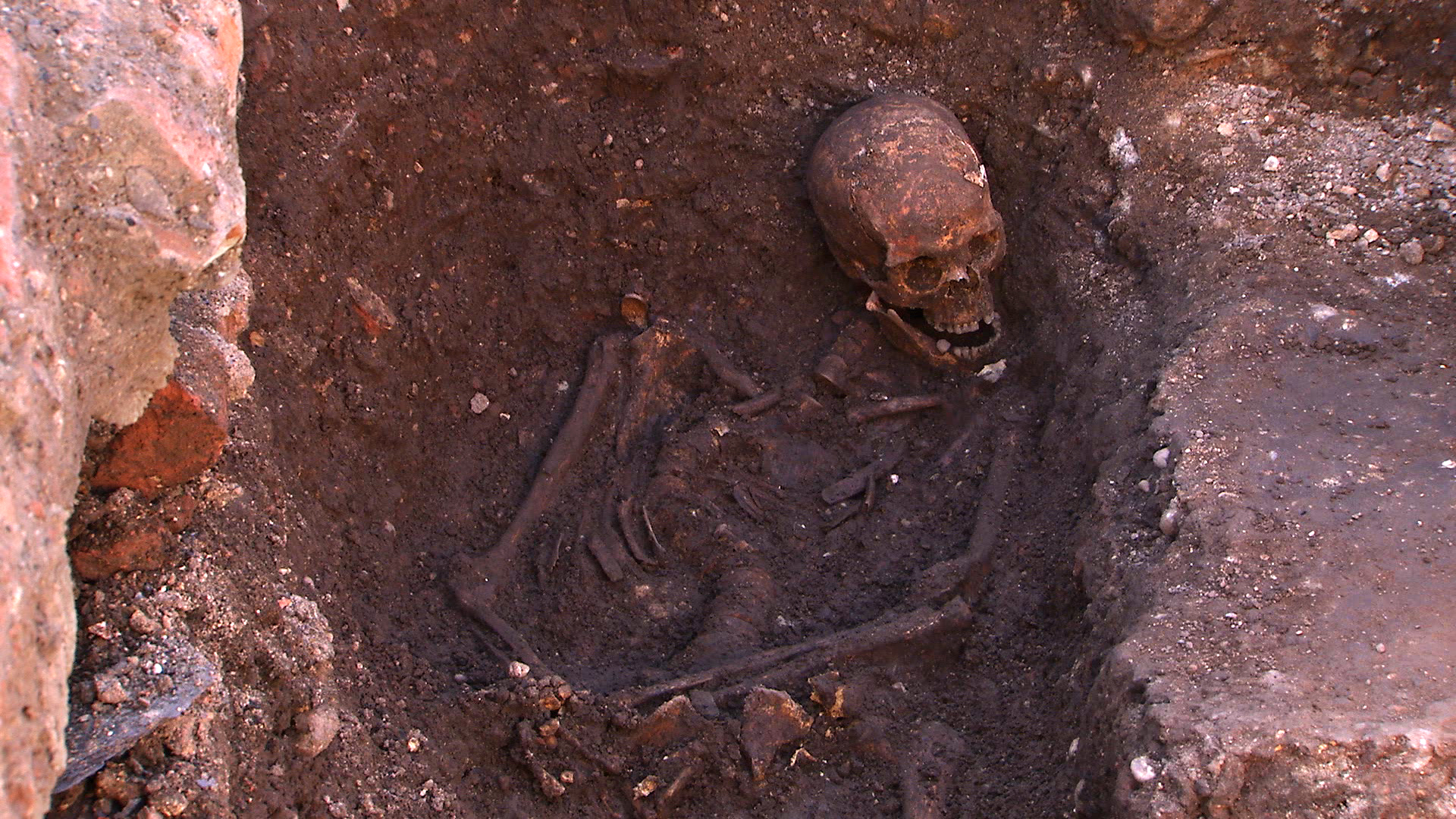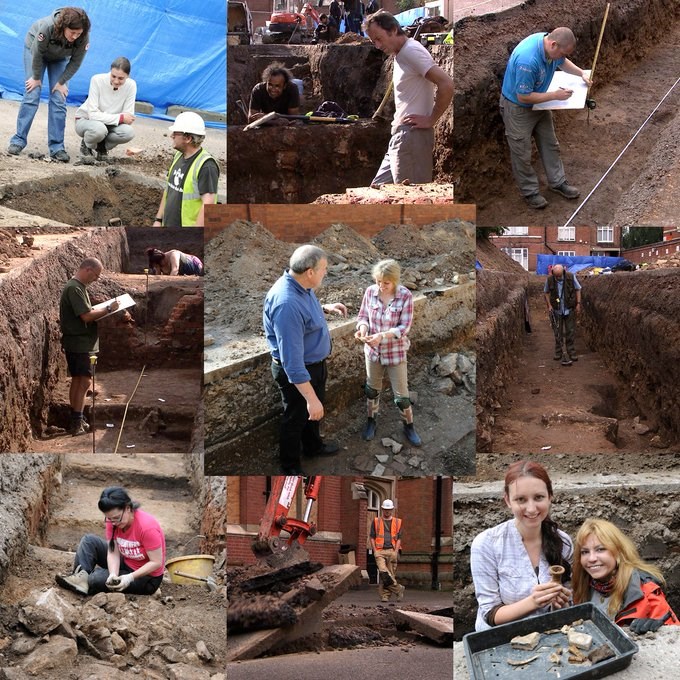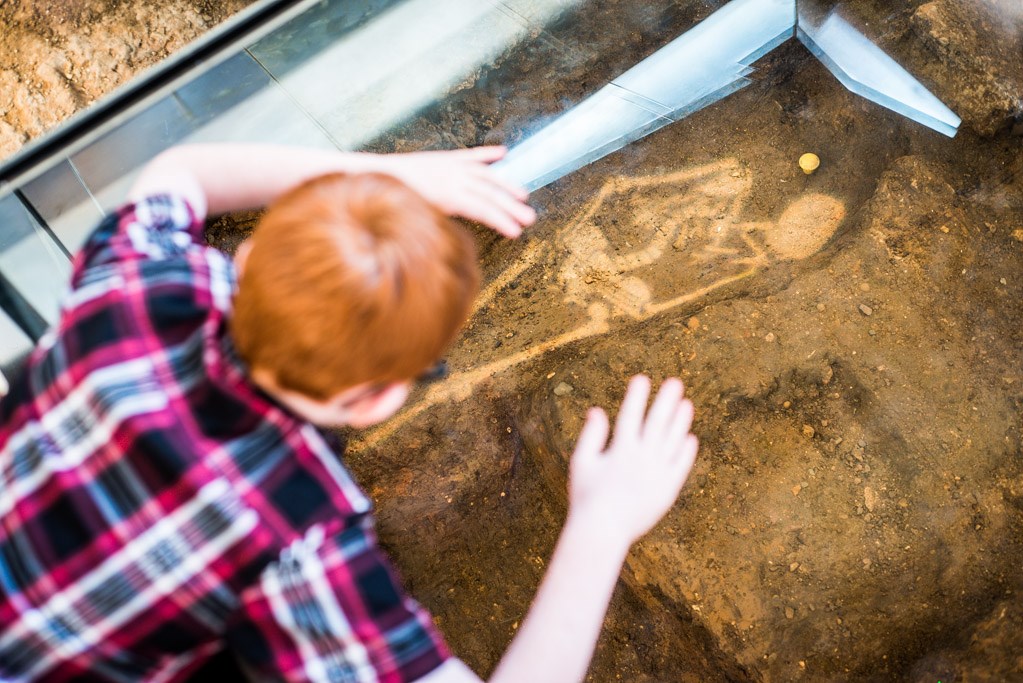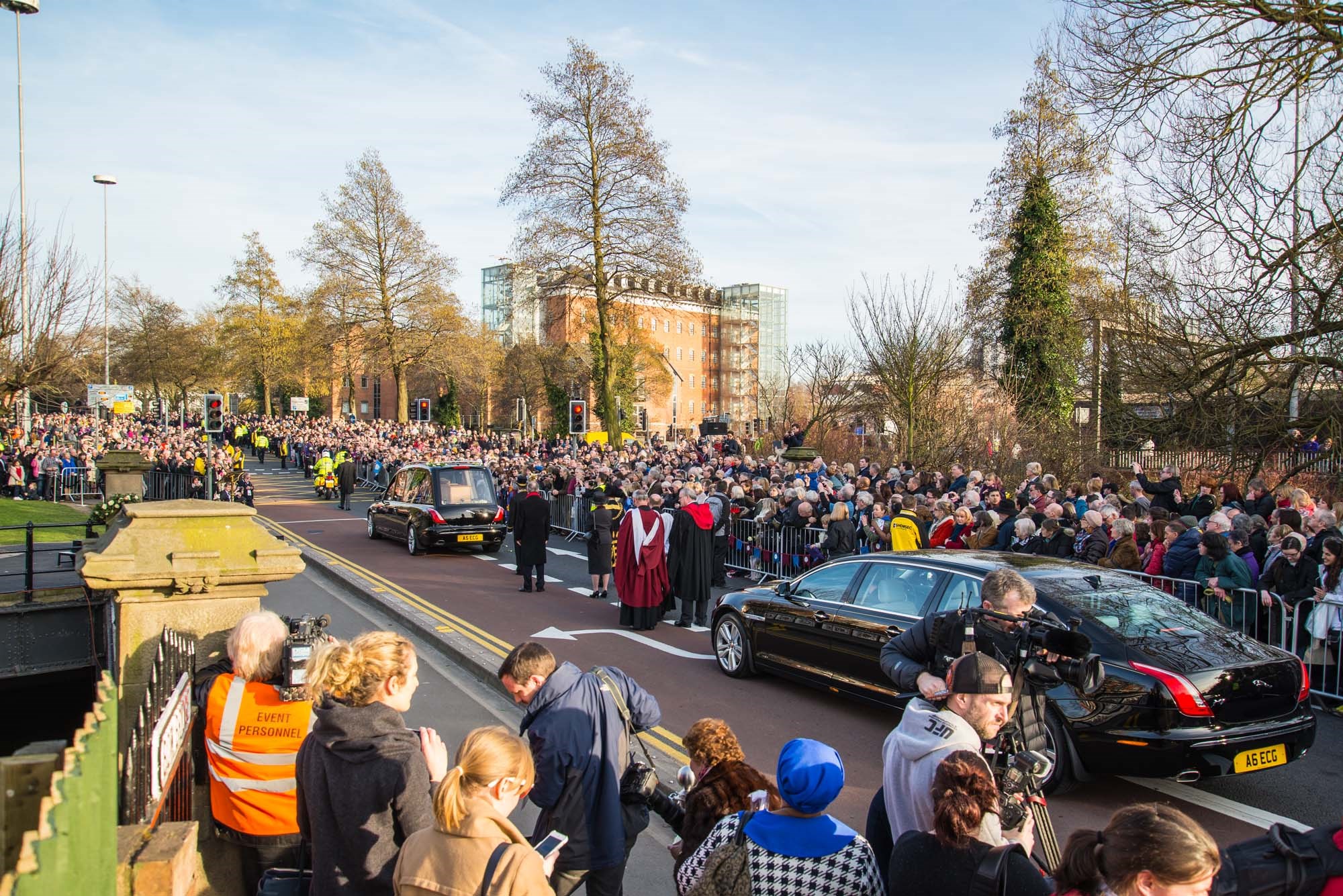
In August 1485 King Richard III was killed at the Battle of Bosworth, brought back to Leicester and after a lying in state for a few days was buried by the Grey Friars, a Franciscan Holy order, in their friary church.
In August 2012, 527 years to the day that King Richard III was killed at the Battle of Bosworth, Leicester City Council, the University of Leicester, and the Richard III Society began the archaeological dig for the ‘Looking for Richard’ project, a search underneath a car park in Leicester, to find King Richard III’s remains and the Grey Friars Church.
Allowing us to now tell one of the greatest archaeological detective stories ever told, and the inspiration for the British comedy drama ‘The Lost King‘ released in cinemas worldwide during Autumn of 2022.
Unknown at the time King Richard III’s remains were discovered in the first trench dug, just 6 hours into the two week planned excavation. After much research and analysis, only five months later, the University of Leicester were able to confirm that the skeleton unearthed by archaeologists in trench one, was in fact Richard III with 99.999% accuracy.
There was a well-known local legend that King Richard III’s bones had been disinterred (dug up) and then unceremoniously thrown into the river Soar by a mob at the time of The Reformation (there is a Victorian stone plaque nearby the local Bow Bridge commemorating this legend).
However a number of researchers had begun to put the case that the remains of King Richard III were still buried in the Greyfriars area of Leicester, including David Baldwin, a University of Leicester tutor.
In the years following, this theory was advanced by historian John Ashdown-Hill, who together with researcher Philippa Langley, they proposed a more precise location for his whereabouts: the north end of a city council car park at Greyfriars, the offices then of the Social Services department.
In Spring 2011 and Philippa Langley, of the Richard III Society, approached Leicester City Council and the University of Leicester Archaeological Services (ULAS) to propose an excavation of the Greyfriars Social Services car park site. Everyone was enthusiastic.
Although the chance of actually finding Richard III were minute, ULAS were keen to find and locate the old Greyfriars Church.
With the financial backing of the University of Leicester and an International Appeal by Philippa to the members of the Richard III Society to raise more than half of the funding required, the dig was funded and got the go ahead for summer 2012.

Image Credit: University of Leicester Archaeological Services
In August 2012, the careful process of excavation began. In the days that followed the archaeologists uncovered not only the old Greyfriars church, but a skeleton with battle wounds and a curved spine.
The skeleton was exhumed and the process of formal identification began. Experts from the University of Leicester used DNA sampling to link the skeleton to Richard III’s descendants. Carbon dating of the bones dated them to 1455-1540, which coincides with Richard III’s death. Furthermore the bones were identified to be of a man between late 20s or early 30s and Richard III died aged 32.
After careful scientific examination, the University announced to the World Press in February 2013 that the skeleton found was indeed Richard III.

Examining the skeleton gave the University a new insight into the life and death of Richard III, challenging the portrayal by some Tudor historians, with a political “axe to grind”, as being “deformed”; although the curved spine of his skeleton does show he had Scoliosis, he did not have a withered arm or other details attributed to him in some characterisations.
The King Richard III Visitor Centre opened just 20 months later in July 2014 and King Richard III’s mortal remains were formally reinterred in Leicester Cathedral, opposite the King Richard III Visitor Centre, in March 2015.

Image Credit: Story Of Leicester